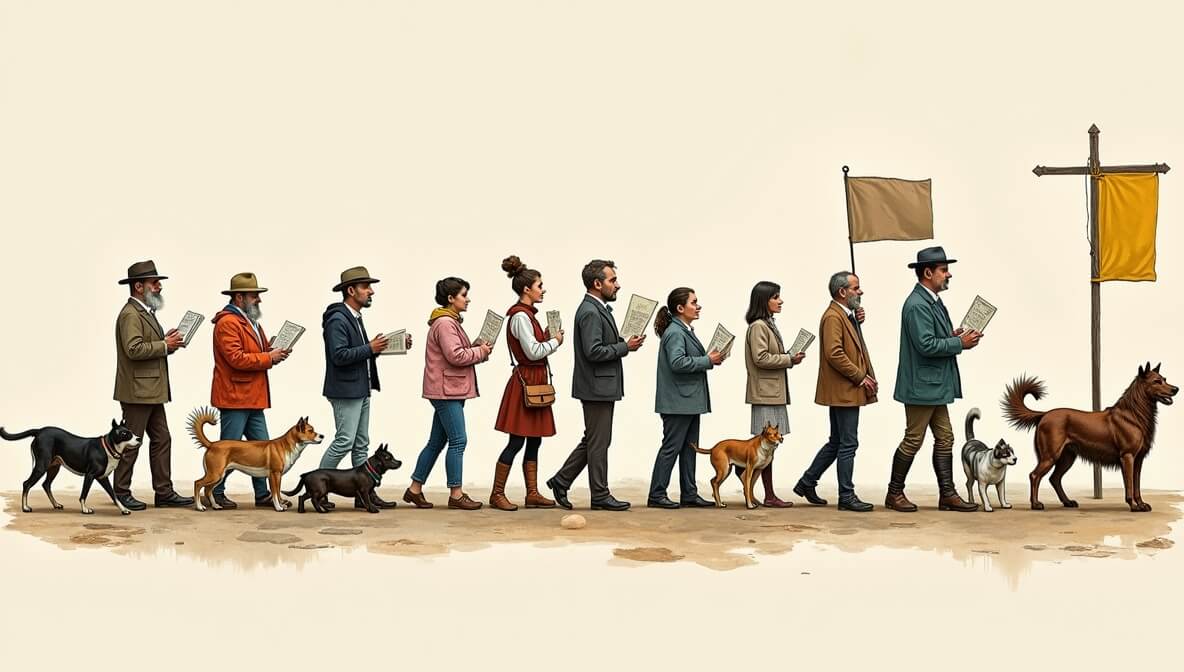The History of Animal Welfare Movements

The animal welfare movement is built on centuries of advocacy for the ethical treatment of animals, with progress shaped by both social changes and scientific advances. From early reforms to today’s global campaigns, the journey reflects a growing recognition of animals’ rights and the moral obligation to protect them. Here’s how this movement has evolved over the years.
Early Beginnings: 19th-Century Advocacy
- The origins of modern animal welfare can be traced back to the 19th century, when society began to confront the widespread cruelty faced by animals in industries like transportation, farming, and entertainment. The Royal Society for the Prevention of Cruelty to Animals (RSPCA), founded in 1824 in the United Kingdom, is one of the first organized efforts dedicated to protecting animals from cruelty.
- The RSPCA’s creation was part of a broader cultural shift toward moral reform, which began to challenge traditional views of animals as mere property. Soon after, similar societies emerged across Europe and the United States, advocating for animal protection laws and greater public awareness.
- These early efforts laid the foundation for collaborative efforts that have expanded into today’s global animal welfare networks. Learn more about non-profits collaborating for greater impact and how the spirit of partnership from these early movements continues to shape modern-day animal advocacy.
Expanding the Mission: Early 20th Century
- As the 20th century unfolded, the scope of animal welfare expanded. What started as a movement focused on farm animals and working animals gradually incorporated pets and wildlife into the conversation. Humane education programs emerged, teaching children the importance of kindness and empathy toward animals.
- Organizations like the American Humane Association took significant steps forward by advocating for humane slaughter practices and establishing more stringent protections for pets. These early reforms reflected a broader societal shift toward compassionate treatment for all animals, regardless of their use in human life.
- This period also saw the rise of social enterprises and organizations that blended mission-driven work with practical, hands-on solutions. Explore the rise of social enterprises and see how the business model, grounded in ethics, has influenced animal welfare organizations.
The Animal Rights Revolution: 1970s–1980s
- The 1970s and 1980s ushered in a new era of advocacy with the publication of Peter Singer’s “Animal Liberation” (1975), which became a cornerstone text for the animal rights movement. Singer’s work challenged the traditional view of animals as property, calling for a reevaluation of how society treats all sentient beings.
- This period marked the rise of radical activism and global movements, with organizations like PETA (People for the Ethical Treatment of Animals) gaining prominence. Activists of the era pushed for stricter regulations on animal testing, factory farming, and the fur trade. Through media campaigns and high-profile protests, animal rights groups used storytelling to galvanize public support and demand change.
- The power of storytelling became a key tool for drawing attention to animal suffering. PETA’s use of shocking imagery and emotive campaigns helped propel animal welfare into the public consciousness, while their work continued to shape legislation and consumer behavior.
- For more on how storytelling strengthens advocacy, consider the role it played in energizing the animal rights movement in the 70s and 80s.
Modern Global Campaigns
Today, animal welfare is no longer confined to isolated regional efforts—it’s a global priority. Non-profits, governments, and local communities are working together to tackle pressing issues such as:
- Wildlife conservation and protecting endangered species.
- Industrial farming reform, including the reduction of factory farming and promoting more sustainable agriculture.
- Habitat loss driven by climate change, urbanization, and deforestation.
International treaties like the Convention on International Trade in Endangered Species (CITES) and the Wildlife Protection Act reflect the growing recognition that animals are sentient beings deserving of legal protection. Alongside these efforts, local animal rights organizations are creating more holistic solutions—such as wildlife corridors and sustainable farming practices—that benefit both animals and the communities around them.
In this digital age, technology plays a pivotal role in amplifying advocacy efforts. Tools such as social media and online petitions have made it easier than ever to mobilize global support for animal protection causes. Learn more about how technology is revolutionizing non-profit work and its role in modern animal advocacy.
Continuing the Legacy
The legacy of the animal welfare movement is one of progress and growing awareness. What began as a fight against cruelty has evolved into a global commitment to protect animals’ intrinsic rights and to create a world where animals are respected, not exploited.
While significant strides have been made, the movement continues to face challenges—such as factory farming, wildlife poaching, and the misuse of animals in entertainment. As society becomes increasingly aware of the ethical treatment of animals, it is our collective responsibility to ensure their protection through stronger laws, global collaborations, and public education.
Together, we can build on the hard work of those who fought for animals’ rights and continue to evolve as stewards of the earth’s creatures.
